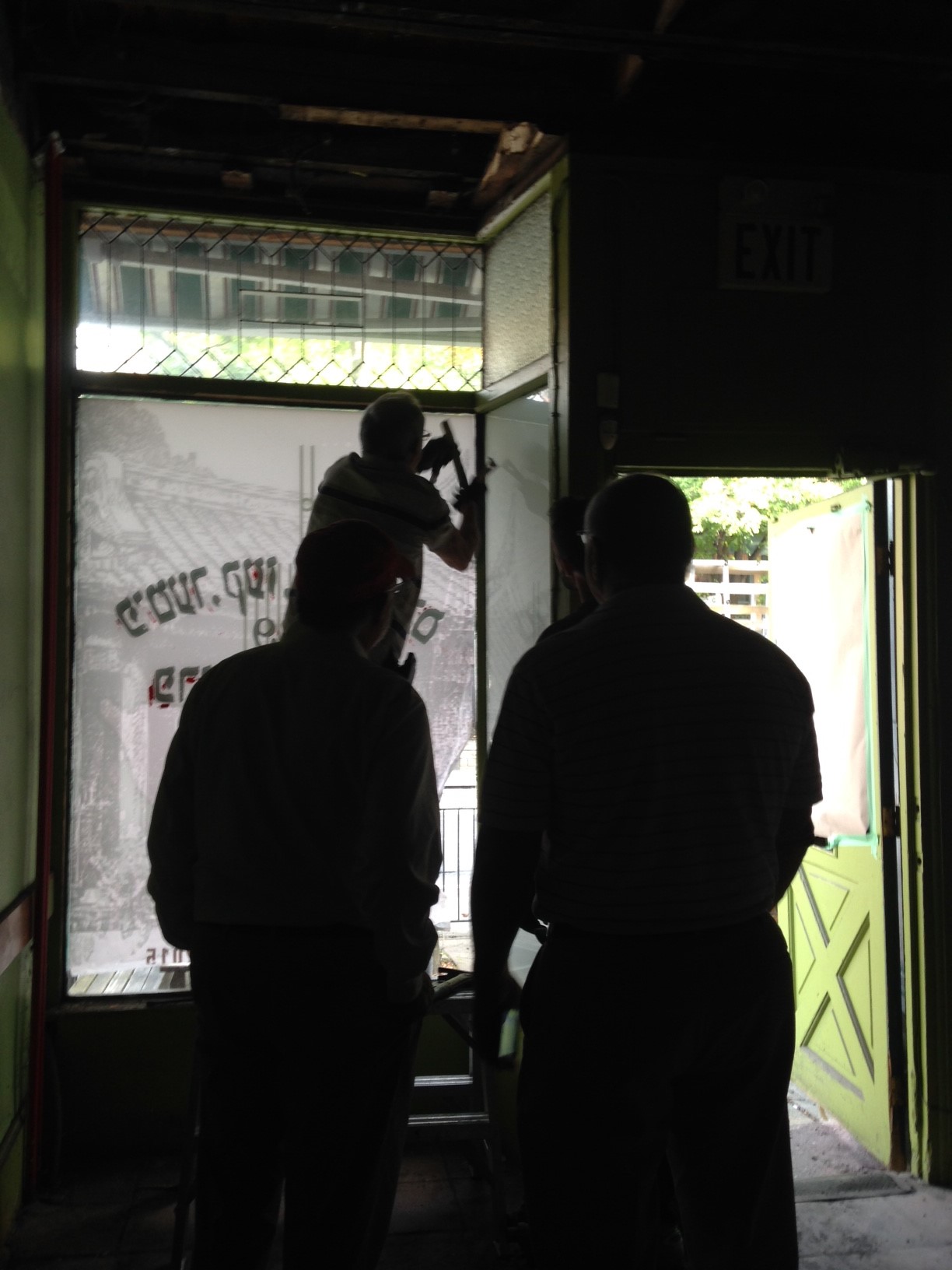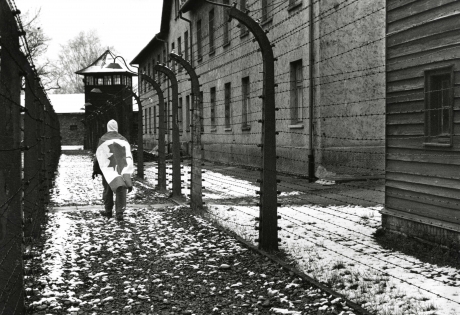The Removal and Preservation of the Mandel's Creamery Window
Community?
The word “community” is the wireless password at Bicerin, the charming coffee place, a few stores down from 29 Baldwin Street where this morning, the Ontario Jewish Archives oversaw the careful removal of the original hand-painted Yiddish sign from Mandel’s Creamery that had remained there for over 70 years.
As I walked away with my coffee, I smiled at this chosen password, given what we were about to do in the next hour. Baldwin Village, a designated heritage neighbourhood, is a thriving assortment of independent bookstores, record shops, noodle houses, new age boutiques, an Asian Gelateria. This is indeed a community, and an increasingly rare one in our Starbucks-saturated city.
I began to consider the various meanings of the word “community” that we toss around so frequently. I think about the heartfelt and helpful response of the community when the OJA first raised awareness about the potential threat to this last Yiddish sign of the once thriving Jewish neighbourhood.
When, just 10 days ago, the OJA was asked by the owners of Formocha, the incoming business at 29 Baldwin Street, to remove the window, a very different community came together to ensure its safe removal. Within hours, through the UJA Federation of Greater Toronto’s Real Estate Division, led by David Sadowski, the Ontario Jewish Archives was connected with a trustworthy glass company who brought their best people out to do the job. And through the OJA’s connections with the Heritage Community, we had a number of consultants eagerly sharing their expertise on how to handle the removal and ensure its long term preservation. They, too, sent their people this morning to aid with this job. For this community of people that quickly reacted and responded, we are grateful.
And, of course, I think about this Jewish community of new immigrants that once thrived on these streets--the community that used to buy their butter and cheese at Mandel’s Creamery, their blueberry buns and Shabbat Challahs at various bakeries, the street peddlers, the legendary live chickens. The smells of the community! And, I hear the sounds as well—the Yiddish that was once spoken on these streets. During this period (roughly 1920-50s), there were three Yiddish newspapers printed and read locally in Toronto, including a daily—The Yiddisher Zshurnal. It was the mother tongue that brought all these immigrants together in this community. Unfortunately, it was not passed on to their children as the parents wanted their children to assimilate—to learn English, to be Canadian, part of that community. Gey Gezunt.
The Yiddish language is long gone from this neighbourhood. And, the removal of this sign—the last remnant—saddens me. However, we will work with Formocha to install a reproduction of the window so that the origins of its location is remembered. And, the OJA will preserve the sign and find a way to create a tribute to this language of the past in Baldwin Village, to remind us of the many layers that make up our city of newcomers.
The OJA is incredibly grateful for the cooperation of the owners of Formocha and the considerable support received from the Mandel family. And, as always, I am grateful for my OJA community--Archivists Donna Bernardo-Ceriz and Melissa Caza. If you have further questions, please contact ojainquiries@ujafed.org.
Dara Solomon
Director, Ontario Jewish Archives




![Passover Seder at Fort Brady (Sault Ste. Marie, Michigan), [ca. 1942]. Ontario Jewish Archives, item 4819. Passover Seder at Fort Brady (Sault Ste. Marie, Michigan), [ca. 1942]. Ontario Jewish Archives, item 4819.](https://ontariojewisharchives.org/cms_uploads/images/4819-copy2.jpg) There are a number of photographs of large-scale Seders organized for Jewish servicemen and women during the Second World War. This photo is from a Seder held at Fort Brady military base in Sault Ste. Marie, Michigan in 1942. It was attended by military personnel from both the United States and Canada and Rabbi Fishman of Congregation Beth Jacob in Sault Ste. Marie, Ontario led the Seder. Canadian Winston Rubinoff attends a 1943 Seder for army personnel at the Balfour Club near Trafalgar Square in London, England. There are also photographs of a Seder in Prince George, British Columbia on April 3, 1944, also for military personnel.
There are a number of photographs of large-scale Seders organized for Jewish servicemen and women during the Second World War. This photo is from a Seder held at Fort Brady military base in Sault Ste. Marie, Michigan in 1942. It was attended by military personnel from both the United States and Canada and Rabbi Fishman of Congregation Beth Jacob in Sault Ste. Marie, Ontario led the Seder. Canadian Winston Rubinoff attends a 1943 Seder for army personnel at the Balfour Club near Trafalgar Square in London, England. There are also photographs of a Seder in Prince George, British Columbia on April 3, 1944, also for military personnel.